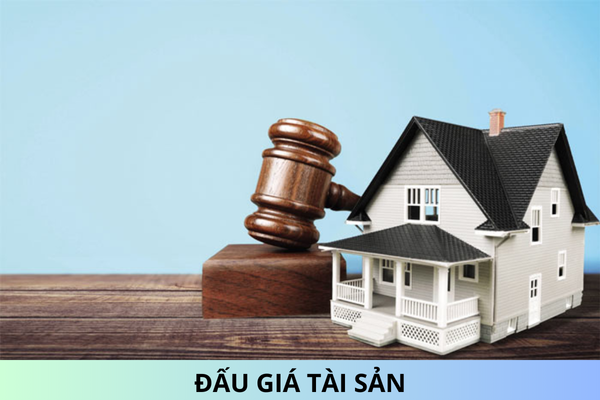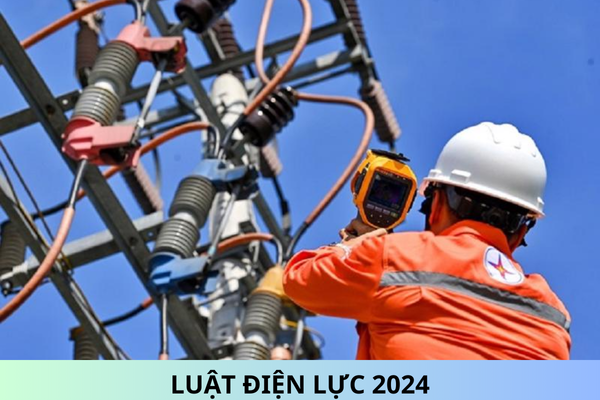What are regulations on focus on perfecting institutions, policies and promoting the development of linkages in the Southeast region of Vietnam with a vision to 2045?
What are regulations on focus on perfecting institutions, policies and promoting the development of linkages in the Southeast region of Vietnam with a vision to 2045? What are regulations on science and technology development, innovation and improvement of infrastructure and urban areas in the Southeast region of Vietnam with a vision to 2045? What are regulations on developing socio-cultural, improving the material and spiritual life of people in the Southeast region of Vietnam with a vision to 2045?
Thank you!
What are regulations on focus on perfecting institutions, policies and promoting the development of linkages in the Southeast region of Vietnam with a vision to 2045?
Pursuant to Subsection 2 Section III of the Resolution 24-NQ/TW in 2022 stipulating regulations on focus on perfecting institutions, policies and promoting the development of linkages in the Southeast region of Vietnam with a vision to 2045 as follows:
- Create a high degree of unity at all levels and sectors on urgent requirements to promote intra-regional and inter-regional cooperation and linkage, create a unified economic space, overcome bottlenecks, mobilize and effectively use resources, improve regional competitiveness.
- Study, build, and institutionalize the mechanism for coordination and connection for regional development in order to improve the efficiency of linkage activities within the region and with the Mekong River Delta, Central Highlands, and Central Coast. Actively participate in international cooperation activities within the framework of ASEAN and ASEAN with partners, countries in the region and other international institutions in order to attract resources to priority areas for development of the region.
- Pilot decentralization and decentralization in the fields of finance, investment, planning, land, environment and organizational structure, effectively mobilize and use resources on the basis of public investment leading and activating non-state resources in order to maximize the potential and advantages of the region. Pilot a number of mechanisms and policies for breakthrough, superiority and international competition to build Ho Chi Minh City into an international financial center. Allocate an appropriate portion of the state budget together with non-state budget capital sources to focus on investing in building essential, important, key, pervasive infrastructure, which serves as a foundation for rapid, sustainable and steady development. Promote exploitation of land fund formed from construction of transport infrastructure for reinvestment and development.
- Decentralize powers for localities in the region to invest in the construction of infrastructure works managed by the central government in the province and city, especially road and railway traffic works, aviation to promote the initiative of localities in mobilizing all resources for infrastructure construction investment.
- Develop regional and local planning for the period of 2021 - 2030, with a vision to 2050 ensuring connectivity, synchronization, unity, efficiency and sustainability.
- Promote administrative reform, develop e-government, towards digital government, digital economy and digital society, smart city. Strengthen decentralization and decentralization associated with checking, monitoring and controlling power. Strongly improve the open, favorable business investment environment, outstanding competition, serving people and businesses. Improve the institution of out-of-court dispute settlement; improve efficiency and shorten the time for dispute settlement and judgment enforcement in the fields of civil, administrative, investment, business, commercial and consumer protection.
What are regulations on science and technology development, innovation and improvement of infrastructure and urban areas in the Southeast region of Vietnam with a vision to 2045?
Pursuant to Subsection 3 Section III of the Resolution 24-NQ/TW in 2022 stipulating regulations on science and technology development, innovation and improvement of infrastructure and urban areas in the Southeast region of Vietnam with a vision to 2045 as follows:
- Develop science and technology, promoting innovation, digital transformation to become the main driving force for regional economic growth. Actively promote research and development of high technology, clean technology, digital technology, biology and new materials. Improve the quality of science and technology research team, especially leading experts and scientists.
- Establish research centers of international standards in a number of universities; encourage higher education institutions to establish science - technology enterprises to cooperate with enterprises to soon transfer technologies and research results and apply them into practice. have mechanisms and policies on investment and finance encouraging enterprises to participate in research and development, technological innovation, gradually grasp and master technology, and develop key products. Develop and apply digital technology, biotechnology, environmental technology, promote digital economy, share economy, circular economy.
- Improve operational efficiency of hi-tech parks and information technology parks; forming and promoting the development of start-up, innovation and artificial intelligence centers in Ho Chi Minh City, Binh Duong, Dong Nai. Focus on developing synchronous, modern and intelligent information technology infrastructure; building digital infrastructure and national database system ensuring safety and security of technical infrastructure. Effectively connect national technology exchanges in Ho Chi Minh City with centers for application and transfer of scientific and technological advances in localities in the region and the whole country.
- Prioritize the development of socio-economic infrastructure system, especially traffic infrastructure. To concentrate on completing the transport network according to the planning, in which to focus on developing the network of highways and ring roads of Ho Chi Minh City; invest in and upgrade airports, especially the regional hub airports, focus on investing in inland waterway infrastructure, attach importance to connecting focal centers with the main waterway transport corridor of the region; improve the capacity of the seaport system; focus on developing North-South high-speed rail traffic, urban railway lines in Ho Chi Minh City. Synchronously connect the transport system with economic zones, industrial parks, airports and seaports. Focus on basically dealing with environmental pollution, overloading social infrastructure, health care, education, especially traffic congestion and flooding in Ho Chi Minh City.
- By 2026, the Ring Road 3 of Ho Chi Minh City will be completed and Tan Son Nhat International Airport expanded. Striving to 2030: Complete the ring road 4 of Ho Chi Minh City; concentrate resources to invest in construction of traffic works according to the approved planning such as Bien Hoa - Vung Tau, Ho Chi Minh City - Moc Bai, Ho Chi Minh City - Chon Thanh, Dau Giay - Lien Khuong , Go Dau - Xa Mat, Chon Thanh - Duc Hoa, Chon Thanh - Gia Nghia; upgrade and expand the national highway system: Ho Chi Minh City - Trung Luong, Ho Chi Minh City - Long Thanh - Dau Giay, the route connecting Long Thanh International Airport (National Highway 20B). Invest in completing the system of coastal roads through Ba Ria - Vung Tau province, Ho Chi Minh City. Speeding up and completing urban railway lines in Ho Chi Minh City, urban railway connecting Ho Chi Minh City with Binh Duong and Dong Nai provinces, Thu Thiem - Long Thanh railway; study and invest in the Bien Hoa - Vung Tau freight railway connecting with Cai Mep - Thi Vai seaport; Ho Chi Minh City - Can Tho. To basically renovate to reach the technical level of inland waterway channels; to form clusters of ports to serve the needs of cargo collection and release for major seaports in the region; continue to develop and modernize Cai Mep - Thi Vai international gateway port into a large international transshipment port of Asia and international stature; to build Can Gio international transshipment port, Ho Chi Minh City; complete relocation of ports on the Saigon River, develop a system of inland ports as planned; put into operation Long Thanh International Airport, phase l; invest in expanding Con Dao airport;
- Improve urban quality ensuring modernity, intelligence, connection with major cities in the region and in the world; synchronously implement policies to reduce load for large cities, promote the development of satellite cities; effectively implement the city model under the city; develop economic zones associated with key urban centers and industrial parks and industrial clusters in dynamic urban areas. Study the functional transformation of industrial parks and export processing zones when the land use term expires and is not in accordance with the planning. Focus on building housing for low-income workers and workers in industrial parks and export processing zones. Form industrial, urban, service and logistics belts along the belt corridor 3, belt 4 and highways of the region. Develop the industrial chain - Moc Bai urban area - Ho Chi Minh City - Cai Mep - Thi Vai port in association with the Trans-Asian economic corridor. Limit the increase of industrial parks in the central urban areas of the region. Develop large-scale industrial - service - urban complexes in Phu My new city, Long Thanh international gateway airport city and Binh Duong Industrial - Urban - Service Complex.
What are regulations on developing socio-cultural, improving the material and spiritual life of people in the Southeast region of Vietnam with a vision to 2045?
Pursuant to Subsection 4 Section III of the Resolution 24-NQ/TW in 2022 stipulating regulations on developing socio-cultural, improving the material and spiritual life of people in the Southeast region of Vietnam with a vision to 2045 as follows:
- Develop comprehensively and synchronously the socio-cultural fields, creating a driving force for socio-economic development and international integration. Appropriate investment in the development of culture, physical training and sports, protection and promotion of the typical cultural heritage values of Ho Chi Minh City and the Southeast region in association with socio-economic development. Plan and develop high-quality entertainment service centers of regional and international level; contribute to improving the material and spiritual life of the people. Combine economic development with cultural and social development, sustainable poverty reduction, job creation, and social security assurance. Effectively implement national target programs, ethnic and religious policies.
- Create strong changes in the quality of training, scientific research and technology transfer. Take the lead in implementing fundamental and comprehensive renovation of education and training, especially in reforming general education and higher education; develop Ho Chi Minh National University, Vietnam - Germany University and a number of large universities in the direction of focus, focus on achieving advanced level in the leading group in Asia.
- Focus on developing high-quality human resources, especially in the field of science and technology application and development; promote vocational education to meet market demand. Have remuneration regimes, attracting talents to work in the region. Build Ho Chi Minh City into a place to train high-quality human resources of the ASEAN region in a number of strong industries and fields; Binh Duong and Dong Nai provinces will become education, training and vocational education centers at regional and national levels.
- Strengthen people's health care with a quality health system, access to high-tech services, and expand health insurance coverage. Pay attention to investing in the grassroots health system and preventive medicine. Increase investment in the development of central-level hospitals located in Ho Chi Minh City, regional general hospitals, regional and international hospitals and specialized medical centers to meet demand. medical examination and treatment at home and abroad. Develop satellite hospitals of central hospitals in urban and provincial capitals such as Bien Hoa, Thu Dau Mot, Ba Ria, Tay Ninh. Research and invest in developing regional Centers for Disease Control to assume the role of supporting Centers for Disease Control for neighboring provinces and have the ability to link internationally.
- Strengthen environmental management and protection, proactively adapt to climate change, rationally and effectively use natural resources. Strengthening measures to inspect, examine and handle establishments causing environmental pollution. Environmental protection in the basins of the Dong Nai and Saigon river systems. Promote coordination among ministries, branches and localities in the field of environmental protection, treatment of waste, waste and wastewater up to environmental standards in association with solutions to adapt to climate change and sea level rise.
Best regards!











